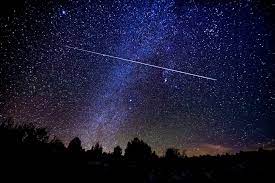Leonid Meteor shower to illuminate UK skies this weekend

London: This weekend, the night sky will be illuminated by the spectacular Leonid meteor shower, providing a captivating show for stargazers
The optimal viewing time in the UK for this year’s display is expected to be from midnight until the early hours of Saturday and Sunday. Known for their swift and brilliant nature, the Leonids are among the notable annual meteor showers linked to Comet Tempel-Tuttle.
The meteor shower radiates from the celestial region known as the head of the Leo the Lion constellation. The comet, Comet Tempel-Tuttle, leaves behind a small trail of debris as it orbits the Sun.
This debris, entering Earth’s atmosphere at speeds reaching up to 70 kilometres per second, undergoes evaporation, giving rise to the luminous streaks of light commonly referred to as meteors.
Observers won’t require specialised equipment to witness the celestial event, as the display will be visible to the naked eye.
Optimal viewing conditions include a clear sky, patience, and positioning oneself in the darkest surroundings possible, away from light sources such as streetlights.
According to the Met Office, the most impressive sightings of the Leonids are anticipated in the central, southern, and eastern regions of the UK, provided there are intervals between the showers.
The meteors are visible across the entire expanse of the sky, making it advantageous to position oneself in a spacious open area where the night sky can be surveyed with the naked eye. However, if one were to track the trajectories of the meteors, they appear to originate from the Leo constellation.
In the 2023 Leonid shower peak, the Moon is anticipated to be waxing crescent, contributing to favourable viewing conditions.
Approximately every 33 years, corresponding to the orbital period of Comet Tempel-Tuttle, the Leonids exhibit meteor “storms” during which hundreds or even thousands of shooting stars become visible. Notable storms transpired in 1799, 1833, 1866, 1966, and 1999-2001, although the anticipated storms in 1899 and 1933 could have been more impressive. Among these, the 1833 storm was spectacular, showcasing an estimated 100,000 meteors per hour. The meteor storms from 1999 to 2001 produced approximately 3000 meteors per hour.





